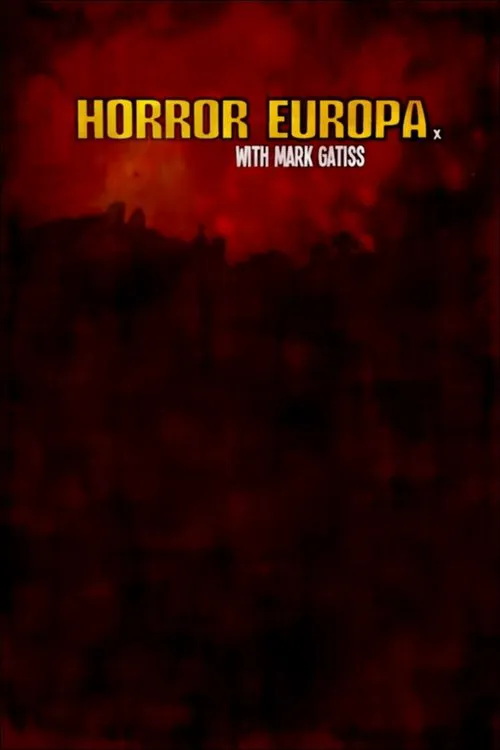Horror Europa with Mark Gatiss

Trama
Mark Gatiss's 'Horror Europa' is a thought-provoking journey through the labyrinthine corridors of European horror cinema, tracing the evolution of terror from the dawn of cinematic history to the turbulent aftermath of World War II. This fascinating documentary delves into the dark recesses of human imagination, uncovering the complex social and historical contexts that influenced the creation of horror classics from across the continent. Gatiss begins his expedition in the German Expressionist era, where silent films such as 'The Golem' (1920) and 'The Cabinet of Dr. Caligari' (1920) set the tone for the genre. These haunting tales of madness, alienation, and the struggle with modernity introduced the world to the iconic sets and eerie atmospheres that would become hallmarks of horror cinema. The eerie landscapes, menacing shadows, and distorted architecture of Germany's Expressionist filmmakers like Robert Wiene and F.W. Murnau captured the disillusionment and anxiety of a society reeling from the aftermath of World War I. By examining these seminal works, Gatiss illustrates how the horrors of war and the trauma it inflicted on individuals and communities laid the groundwork for a generation of filmmakers to tap into the collective psyche. As Gatiss ventures further afield, he arrives in the midst of the 1930s, where the sinister forces of fascist ideology began to exert their influence on the continent. In Spain, cinema was used as a propaganda tool for the military dictatorship of General Francisco Franco. 'La Fuerza del Destino' (1939) stands out as a prime example of how horror was exploited for ideological manipulation. However, this was not a genre without its subversive elements, as the films of Spanish filmmaker Luis Marqués revealed the atrocities committed by Franco's forces, using the tropes of horror to condemn the brutal suppression of the Second Spanish Republic. Gatiss argues that in response to the horrors of war and fascism, European filmmakers began to tap into their collective unconscious, crafting stories that not only reflected the darkness of their times but also critiqued the ideologies that fueled it. A stop in Italy takes Gatiss to the realm of giallo cinema, a genre characterized by its graphic violence, elaborate murder plots, and an air of Italian chic. Directors like Dario Argento and Mario Bava revolutionized the art of horror storytelling with their inventive and visceral tales of murder and mayhem. Their films like 'Deep Red' (1975) and 'Black Sunday' (1960) pushed the boundaries of censorship and social acceptability, revealing the underbelly of Italian society. Gatiss suggests that the giallo phenomenon was a reflection of the societal unease and disillusionment of the 1960s and 1970s, as well as a response to the increasing influence of the global mass media and the blurring of reality and fiction. Gatiss's travels also bring him to the realm of Belgian sexploitation cinema, where the lesbian vampire film 'Daughters of Darkness' (1971) redefined the boundaries of the genre. Directed by Harry Kümel, this film's sensual exploration of same-sex desire and vampirism was groundbreaking at the time. Gatiss argues that the liberalization of attitudes towards sex and the increased visibility of queerness on screen led to the creation of more daring and experimental works that pushed the limits of what was acceptable in mainstream cinema. In the concluding chapters of 'Horror Europa,' Gatiss explores the legacy of horror cinema in postwar Europe, highlighting films like the British 'Peeping Tom' (1960), directed by Michael Powell, which confronted the horrors of voyeurism and the fragility of the human psyche. Gatiss demonstrates how filmmakers adapted to the changing times and confronted the social anxieties and fears of their audiences. By examining these examples, he illustrates the complex interplay between historical context, social change, and the ever-shifting landscape of horror cinema. Ultimately, 'Horror Europa' is a captivating tribute to the enduring power of European horror cinema, offering a rich, nuanced, and compelling exploration of the genre's roots, evolution, and influence on contemporary filmmaking. Through Gatiss's insightful commentary and meticulous research, the film showcases the diversity and complexity of European horror traditions, revealing how a century of social upheaval, trauma, and creative expression forged a distinctive horror canon.
Reseñas
Recomendaciones



